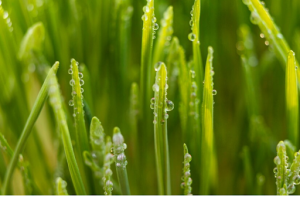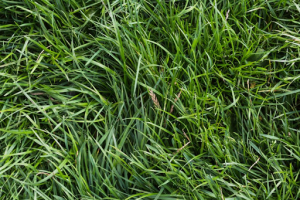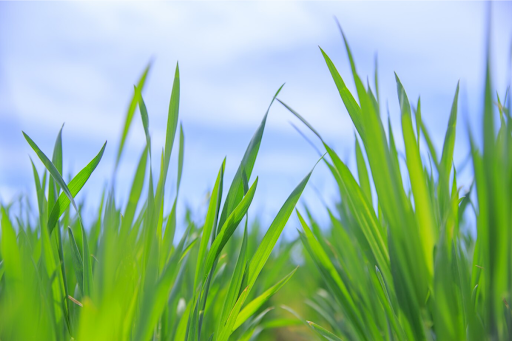introduction
Annual ryegrass is a quick-growing grass often used in gardens and farms. Known for its bright green color, it thrives in various soil types. Usually planted in the fall, annual ryegrass helps protect the soil during winter and covers empty areas quickly, preventing weeds from taking over.
One of the best benefits of annual ryegrass is that it adds nutrients back to the soil when it decomposes, making it ideal for healthy gardens and lawns. Whether you’re planting for beauty or soil health, annual ryegrass is a smart choice. Understanding how to plant and care for it will help you create a lush green space. If you’re curious about the benefits of annual ryegrass, keep reading to learn more!
Other Annual Ryegrass Considerations
When growing annual ryegrass, there are a few important things to keep in mind. First, it’s best to plant it when the soil temperature is between 50°F and 65°F. This helps the seeds germinate quickly. Make sure to prepare the soil by clearing away weeds and loosening it up. This will give the ryegrass the best chance to grow strong.
Another consideration is watering. Annual ryegrass likes moist soil, so you should water it regularly, especially in dry weather. However, be careful not to overwater, as too much water can lead to root problems. Additionally, you may want to mow the grass when it reaches about 6 inches tall. This keeps it healthy and encourages thicker growth. Finally, remember that annual ryegrass is not a permanent grass. It will die off when the weather gets hot in summer. By understanding these key factors, you can enjoy a lush green lawn or garden with annual ryegrass!
Benefits of Annual Ryegrass Cover Crops

Annual ryegrass cover crops offer many benefits for gardens and farms. First, they help prevent soil erosion by holding the soil in place with their strong roots. This is especially important during heavy rain, when soil can wash away. Second, annual ryegrass adds nutrients back into the soil. As the grass grows, it absorbs nitrogen from the air, which helps feed plants when it decomposes.
Additionally, this grass keeps weeds from taking over because it grows so quickly. This means less competition for your main crops. Annual ryegrass also improves soil structure, making it easier for water and air to reach plant roots. By using annual ryegrass cover crops, you can create a healthier environment for your plants and promote better growth. Overall, these benefits make annual ryegrass an excellent choice for anyone looking to boost their garden or farm’s health and productivity.
Other Options for Annual Ryegrass Cover Crops
If you’re looking for alternatives to annual ryegrass cover crops, there are several great options to consider. One popular choice is clover. Clover grows quickly and helps fix nitrogen in the soil, which is important for healthy plants. It also attracts beneficial insects, making your garden more vibrant.
Another option is vetch, which is a climbing plant that adds lots of nutrients back to the soil. Vetch can also help prevent weeds, just like annual ryegrass. If you’re interested in a mix, you can plant a combination of oats and peas. This mix grows well together and helps improve soil structure.
Finally, buckwheat is a fast-growing cover crop that suppresses weeds and attracts pollinators. These options can provide similar benefits to annual ryegrass, helping to protect your soil and enhance your garden’s health while offering variety in your cover crop choices.
Annual Ryegrass as a Weed

Annual ryegrass can sometimes act like a weed in gardens and fields. While it’s often planted as a cover crop, it can spread quickly and take over areas where it isn’t wanted. This fast growth can outcompete other plants for space, sunlight, and nutrients, which can be a problem for farmers and gardeners.
When annual ryegrass grows in unwanted places, it can make it harder for crops to thrive. To prevent this, it’s essential to control where and how you plant it. Regular mowing or removing the grass before it goes to seed can help keep it in check. If it spreads too much, you may need to use specific herbicides to manage it. Understanding both the benefits and challenges of annual ryegrass can help you use it wisely in your garden or farm, ensuring it remains helpful rather than becoming a pesky weed.
Annual ryegrass as a cover crop
Annual ryegrass is an excellent choice for a cover crop, and it offers many benefits for soil health. Planting annual ryegrass helps prevent soil erosion, especially during heavy rain. Its strong roots hold the soil together, keeping it in place. This grass also grows quickly, providing a green cover that can block weeds from taking over.
Another great feature of annual ryegrass is that it improves soil quality. As it grows, it takes in nutrients from the air and soil, which are released back into the ground when the grass dies and decomposes. This process helps feed other plants, making your garden or farm more productive. Additionally, annual ryegrass can attract beneficial insects, like pollinators, which help your other plants grow. Overall, using annual ryegrass as a cover crop is a smart and eco-friendly way to enhance soil health and support a thriving garden or farm!
FAQ’s
- What is annual ryegrass?
Annual ryegrass is a type of grass that grows quickly and is often used in gardens and farms. It is known for its bright green color. - Why should I plant annual ryegrass?
Planting annual ryegrass helps keep the soil healthy. It prevents soil erosion, adds nutrients to the soil, and stops weeds from growing. - When is the best time to plant annual ryegrass?
The best time to plant annual ryegrass is in the fall when the soil temperature is cool. This helps the seeds grow quickly. - How do I take care of annual ryegrass?
To take care of annual ryegrass, make sure to water it regularly, especially in dry weather. You can also mow it when it gets too tall to keep it healthy
Conclusion
In conclusion, annual ryegrass is a valuable plant that can greatly benefit gardens and farms. Whether used as a cover crop or for soil improvement, it plays an important role in enhancing soil health. By preventing erosion, adding nutrients, and suppressing weeds, annual ryegrass helps create a better environment for other plants to grow.
It’s easy to plant and care for, making it a favorite among gardeners and farmers alike. Understanding the benefits and considerations of annual ryegrass allows you to make smart choices for your garden or farm. As you explore more about this versatile grass, you’ll see how it can help you achieve a lush and productive space. Overall, knowing all about annual ryegrass can lead to a healthier garden and happier plants.
Read More : Importance of horticulture in economy

